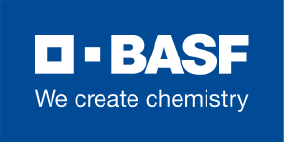In the chemical sector the safety of our products is key and before chemical substances reach the market, they must undergo rigorous assessments. Animal testing is the traditional, regulatory accepted model to observe adverse effects of substances on human health. With the EU’s Chemical Strategy for Sustainability the need for testing is bound to increase.
Yet animal testing is highly problematic from an ethical perspective and large parts of our society strongly oppose it. Unless we can replace animal testing with credible and reliable alternatives, those competing priorities will keep posing a dilemma for policymakers, regulators and industry alike.
What if we didn’t need animal testing anymore? Developing and implementing alternatives to animal testing has long been high on the industry’s agenda – even more so as alternative testing methods can outperform animal testing. In fact – with the right non-animal testing methods we shed light into what used to be a black box of complex physiological processes. BASF, as one of the largest applicants for registrations of substances worldwide, is a great believer in this way forward and has invested significantly in the area.
The big question now is whether Europe’s policymakers and regulators will seize the opportunity to revolutionise testing regulation and open a path to the future?
Opening the black box
BASF has been developing non-animal methods for many years and implements them whenever it is legally compliant and scientifically sensible. We have been running our own laboratory for the development and application of non-animal methods since 2004 and each year we invest a 7-digit figure in the development of those methods (e.g. EUR3.5 million in 2020).
Why do we invest in this? First and foremost for ethical reasons: to reduce the number of animals needed to test for human health safety. However, we also see that non-animal testing methods can be superior as they tend to allow a level of precision in chemical safety assessments that animal studies simply do not offer. For instance, they allow toxicologists to better understand the mechanism of toxicity: whilst animal tests merely show whether a substance is toxic, they cannot model details such as human genetic backgrounds. Providing information on different effects for differing genetic constitutions is a value added of non-animal models.
How to create alternatives to animal testing?
For this to work, we needed to change perspective. Instead of developing a one-to-one alternative for each animal test separately, we needed to look at the non-animal methods first and put their potential at the centre of developing a new approach to risk assessment.
In undertaking all of this work we at BASF and our partners are not aiming for commercialisation or exclusivity. The results of this innovation are open to all.
Paving the way
In 2008, it became clear that new EU rules would prohibit animal testing in approval processes for cosmetics. This led us to focus on testing methods for sensitisation (i.e. allergic skin reactions) which is the most frequent occupational illness in the chemical sector. This was a joint effort with other companies (P&G and KAO/Shiseido) and academia (RWTH Aachen). The most difficult task was to choose the right non-animal testing methods to obtain as-complete-a-picture-as-possible for all key events in the sensitisation process and combine them into a testing strategy. In the end, a combination of three in-vitro tests and a new Kinetic Direct Peptide Reactivity Assay (KDPRA) made it possible to assess not only the potential for any skin sensitisation, but also provide information on potency.
We knew we had succeeded when the OECD approved our new testing strategy and a new global standard was created that substitutes animal sensitisation tests for all OECD member countries.
In 2021, we saw another breakthrough towards the acceptance of alternative methods: the OECD adopted the world’s first toxicology testing strategy that does not involve animal testing, developed over ten years by BASF together with Givaudan. This testing strategy assesses skin sensitisation and has an even better predictivity for human allergy than traditional animal testing.
Is the EU ready to re-think and replace animal testing?
Well-designed non-animal testing methods allow for the highest level of human health safety. The challenge is that a switch in methods depends on a ‘re-think’ by policymakers and regulators – and this is not happening fast enough.
Hurdles remain high for alternative methods to be picked up by regulatory application: provisions in regulatory frameworks are still based on animal testing and/or approval processes for new methods are lengthy and complex.
A European action plan could change this, led by EU and national authorities and jointly developed and supported by all stakeholders. The goal of this action plan should be to define priorities for the development of future non-animal methods and to describe respective coordination and financing processes. A pledge by authorities to substitute rather than complement should be included as well.
Replacing animal testing with innovative methods would make the world a better place – a worthwhile reason for regulators, policymakers and industry to pull in the same direction. The upside of substituting overcome testing methods is crystal clear: replace the black box with new, superior, knowledge-enhancing approaches. The downside of continued delays is also obvious: why invest in innovation and strive for constant improvement, if achievements cannot be put to use because rules do not adapt to new realities?
Let’s not lose any more time and innovate testing methods AND regulation.

